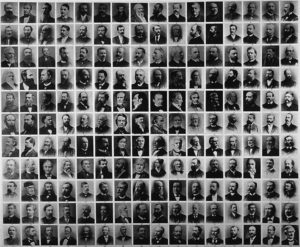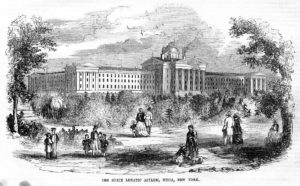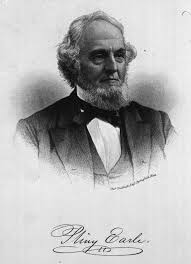
Compilation Portrait of Members of the Association of Medical Superintendents of American Institutions for the Insane, courtesy National Library of Medicine
Practitioners in the new field of psychiatry made some expert moves early on that both enhanced their reputations and brought them better incomes than the average physician. In 1844, a gathering of asylum superintendents met to form an exclusive group: the Association of Medical Superintendents of American Institutions for the Insane. They quickly set themselves up as the only doctors–in the only proper setting–who had the knowledge to diagnose and treat mental problems. These asylum superintendents quickly convinced the public that they and their institutions were the real solution to the problem of treating insanity.
The association’s stated objectives were “to communicate their experiences to each other, cooperate in collecting statistical information relating to insanity, and assist each other in improving the treatment of the insane.”

The New York State Lunatic Asylum at Utica Was One of Only 25 Public and Private Mental Hospitals in America in 1844
It was an appropriate goal, because most of these “experts” had little true expertise in running asylums. Many years later, in 1885, Dr. Pliny Earle brought up the question of allowing assistant physicians at insane asylums to join the Association. In his discussion, Earle reminded the organization’s members that in the Association’s early years, only one physician had even ten years’ experience in healing the insane in a public institution. Only five others had five years or more experience as heads of institutions. The reality was, most men running asylums at that early time only had two to four years of experience doing so.

Dr. Pliny Earle, courtesy National Library of Medicine
Dr. Earle suggested that assistant physicians who had worked continuously five years or more in institutions for the insane be admitted to the Association. This proposal was voted on and adopted.